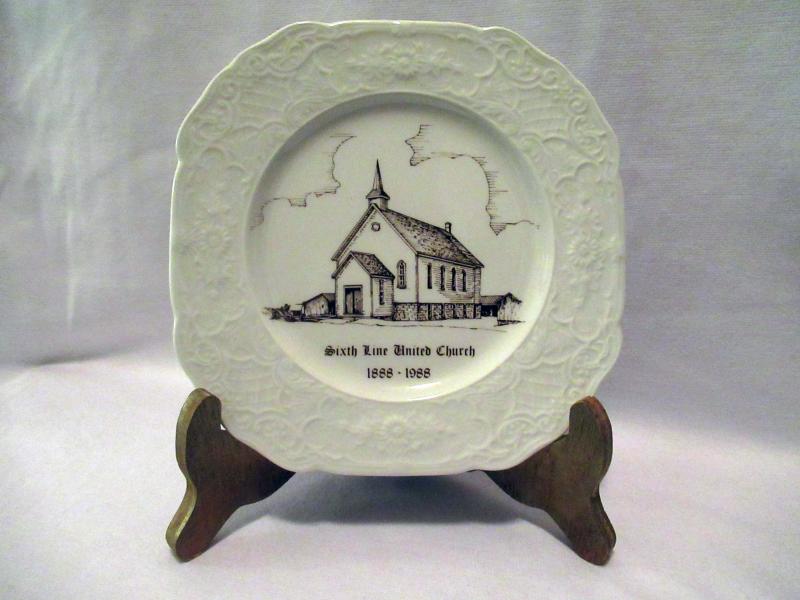
The village of Moore (Mooretown) was becoming a thriving place. In 1857, the Mooretown Circuit was organized. That year, arrangements were made for holding services in the home of the late John Wardrope. The settlers came considerable distances to worship. Many from the east end of the sixth and eighth lines worshipped at Zion.
Later, a log schoolhouse (SS #12 Moore) was built near Mr. Wardrope’s house. Services were conducted there by Rev. Jas. Orme. As the township became more thickly populated, a town hall was erected on lot 15, concession 7, Moore Centre. Services were then held in the hall.
During the first years of church life, much of the work was taken over by the fine old pioneers, who conducted Bible study, prayer meetings, singing lessons and so on. The first minister to visit there was probably “Uncle Joe” Joseph Little, a revival preacher. He travelled on horseback through almost trackless woods and swamps, stopping with the different settlers to bring inspiration and encouragement.
Up to and during the pastorate of Rev. Fallis, the Corunna circuit consisted of 5 points: Corunna, Lucasville (then called Cole’s Corners), Providence (built about 1882), Sixth line (Wardrope school house) and Eighth Line (Temperance Hall). Following Rev. Fallis, two ministers were sent to the Corunna circuit. Before this, services were held every second Sunday, but with the coming of two ministers, two services were held in Corunna each Sunday and one in each of the other points. The ministers were Rev. Ferguson and Rev. John Morrison.
During the pastorate of these two men, the congregation felt that the time had come for the erection of a church. The church was soon underway. Each group wanted to build where they had been accustomed to worshipping. A compromise was made. The site (lot 17. concession 16), owned by Robert Johnston, a staunch member and supporter of the church, was donated to the church by his son. This site was midway between the two centres.
The church was erected in 1888. Opening services were held on November 18, 1888, with a membership of 118 and a Sunday School which had 32 members. Rev. Thomas Cullen of Sarnia conducted the services. A supper and concert were held on the following Monday evening.
Following the pastorate of Rev. Ferguson came Rev. McNair. During his pastorate, the circuit was arranged with three points. Corunna, Sixth Line and Courtright made up the charge. The next minister was Rev. John Reynolds, and then Rev. J.A. Andrews. While Rev. Andrews was minister at the Sixth Line church, their parsonage was moved from Corunna to Courtright. Ministers following this move also made their homes in Courtright.
In 1892, an “Epworth League” was organized with Mr. Frank Edwards as president. Around twenty years later, the name changed to “Young People’s Society” then to “Hi-C”. The “Women’s Missionary Society” was organized by Mr. Oliver of Sarnia in 1907. The organization was later known as “The Ladies’ Aid.”
Rev. Durant was the minister in 1913. In the summer of 1913, the church was raised, a basement added, furnace installed and extensive repairs to the entire building were completed. The total expense was $1,685.85. Sept. 4, 1913 marked the re-opening services. Rev. Graham of Sarnia was the guest speaker with music by the Henderson Quartet.
In 1925, the church entered the church union. The first pastor after union was Rev. T.W. Hazelwood with Dr. Schofield, a retired minister of the former Presbyterian Church as associate pastor. The church became known as Sixth Line United. Following was Rev. R.R. Johnstone who took over in 1928. Also in 1928, the church was again redecorated, both exterior and interior. Handsome platform furniture was purchased and conveniences were added. During 1938, under Rev. Jas. Terry, Golden Jubilee services were held on Sept. 4 and Sept. 11, with former ministers Clysdale and Parr conducting services. The following Tuesday, a supper was held as part of the Jubilee celebration.
During 1956, the village of Corunna was growing and its church separated from Courtright and the Sixth Line to form its own charge. The Courtright and Sixth Line churches were considered as a two-point charge. A new manse was built in Courtright.
A good example of the influence of this church is the Moore Credit Union. This was founded by members of the Sixth Line Church Crusaders Class in the 1930s.
As of 2020, the Sixth Line United Church continues to hold services as part of the Courtright-Sixth Line Pastoral Charge.


